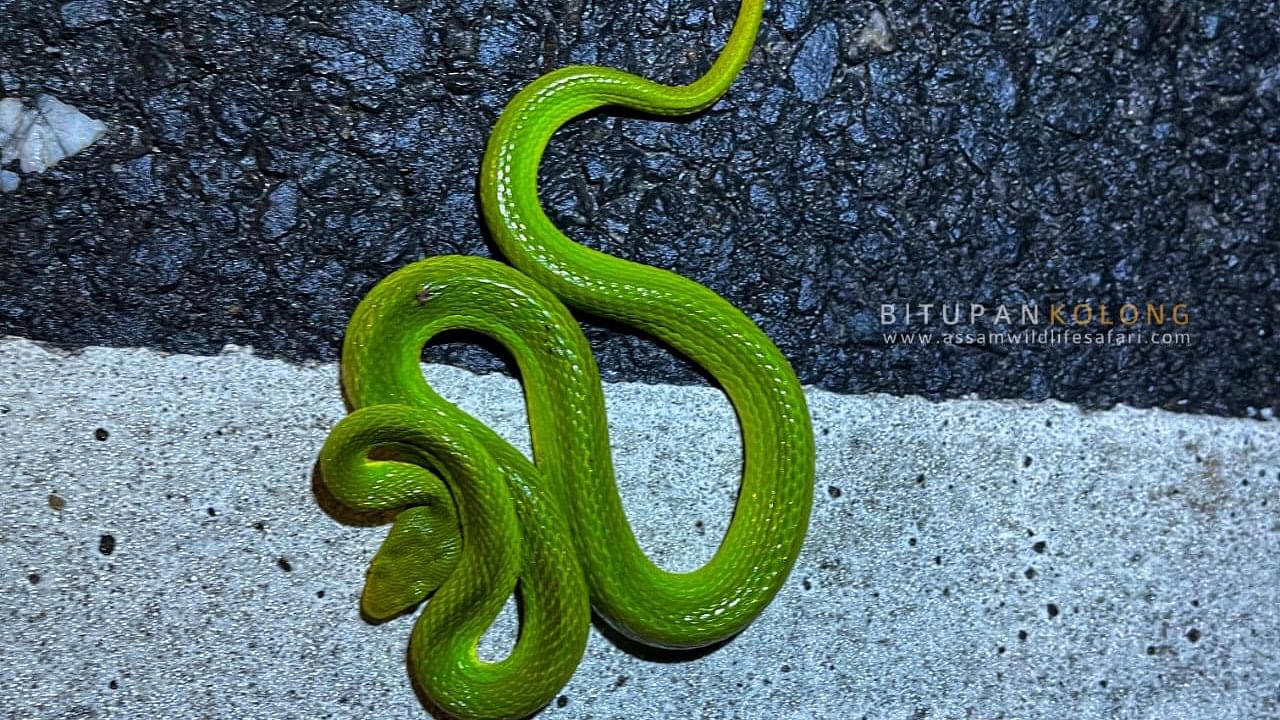
Salazar pit viper.
Credit: X/@himantabiswa
It's every Potterhead's dream to erase that line of demarcation between fiction and reality and enter the land of magic and mystery. Though, as we grow older we learn to accept the harsh reality of the world, that doesn't mean we can't let a bit of magic slip into our day-to-day life. Assam Chief Minister' Himanta Biswa Sarma has done the same.
To every Potterhead's delight, Assam CM shared a picture of a snake, who was named after a character in the renowned series.
The Salazar pit viper— named after Salazar Slytherin (one of the founders of Hogwarts)— made its way to social media, after Assam CM posted its photo with a caption saying, "Isn't nature awesome''. He said, this snake who shares his name with a powerful wizard in the Potter franchise, was found in Assam's Kaziranga National Park earlier this week.
Discovered in 2019, in the lowlands of the western part of Arunachal Pradesh, Salazar pit viper is a venomous, green pit viper.
“Guess what, kids? Kaziranga just found a real-life Harry Potter snake! Meet the super cool Salazar Pit Viper: it's green like magic and has a funky red-orange stripe on its head. Isn't nature awesome?” Sarma said in his post that also accompanied pictures of the snake.
In the books, House Slytherin is named after the great wizard Salazar Slytherin who is one of the founders of Hogwarts School of Witchcraft and Wizardry. The Slytherin house's emblem is also a snake. Moreover, the books also showcase that Salazar Slytherin could speak in Parseltongue which means he could converse with snakes.
This Salazar pit viper, which resides in Assam's national park has a dark green head and yellow-hued green dorsal scales on its body. India Today reports the males have reddish-orange and yellow-orange stripes and a rusty red-orange tail which the females lack.